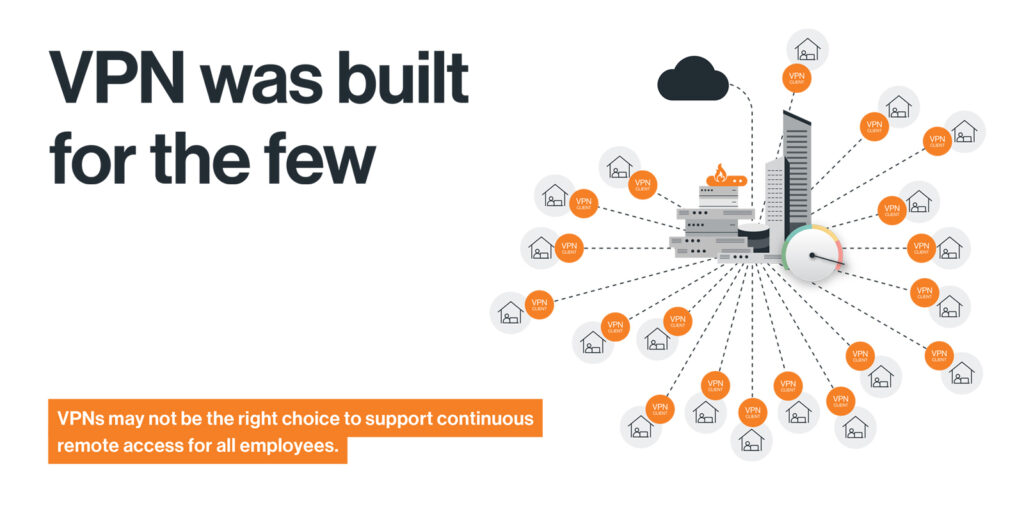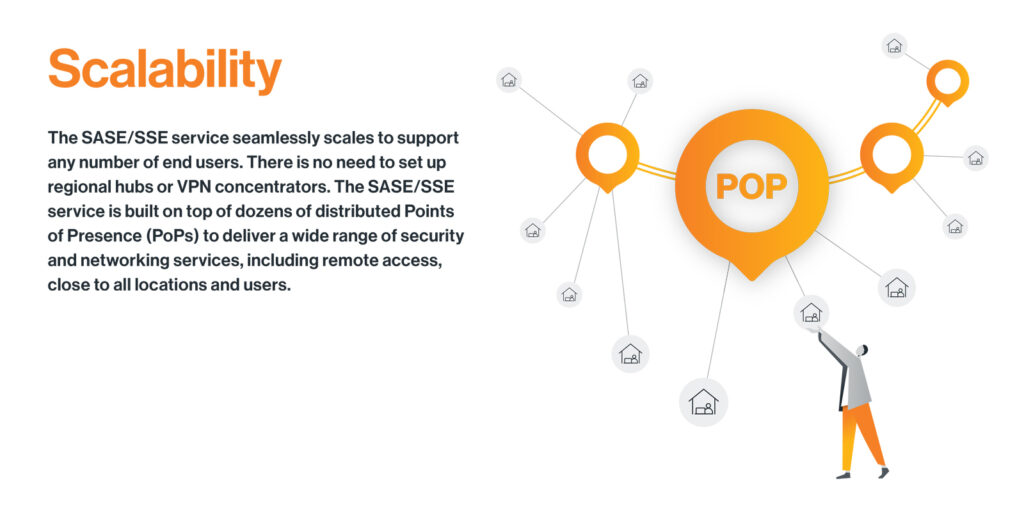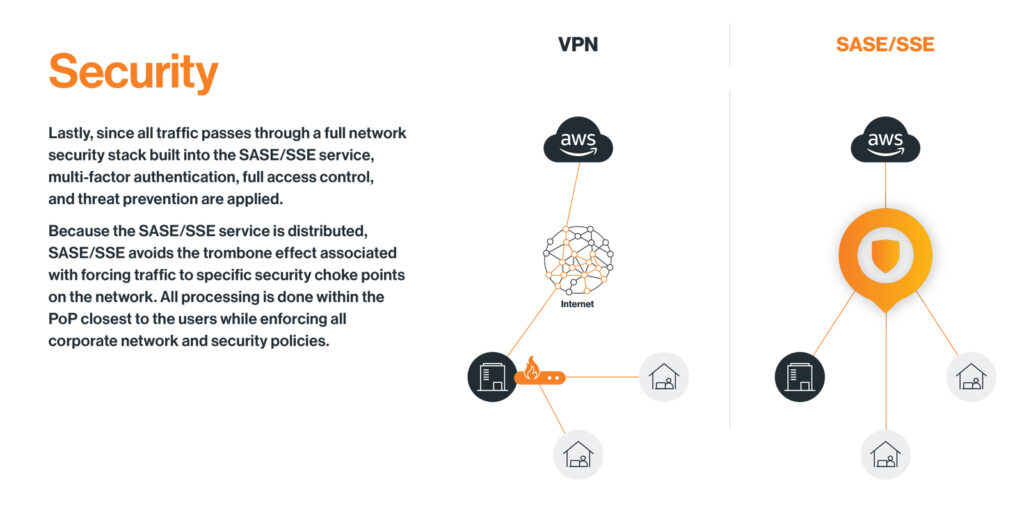
Summary:
With a heavy reliance on remote and hybrid work, the limitations of traditional VPNs, such as scalability, performance and security risks, have become clear. VPNs were not designed for widespread remote access, leading to challenges like slow performance and vulnerability to cyberattacks. Zero Trust Network Access (ZTNA) offers a modern alternative, continuously verifying users and granting access only to specific resources. This cloud-native solution provides enhanced security, scalability and performance, making it ideal for today’s remote workforce.
As organizations continue to adapt to the new normal of remote and hybrid work, the limitations of traditional Virtual Private Networks (VPNs) have become increasingly evident. Just in 2024, bugs and security holes in two separate VPNs led to wide-scale cyberattacks.
Originally designed for a simpler time when only a small fraction of employees needed remote access, VPNs are now struggling to meet the demands of today’s dynamic work environment. As a result, more and more businesses are moving to ZTNA, which offers enhanced security, scalability, and performance.

VPN: An outdated, legacy solution
VPNs have long been the go-to solution for remote access, providing a secure tunnel between users and the corporate network. However, this technology was designed for an era when remote work was the exception rather than the rule.
VPNs were built to accommodate short-term, limited access for a small subset of the workforce—such as executives, sales teams, and field workers. The sudden and widespread shift to remote work over the last few years has exposed several critical flaws in VPN technology, including:
Scalability issues
VPNs are not equipped to handle the continuous, large-scale connectivity required by an entire workforce. As more users log in, VPN servers become overloaded, leading to slower response times and a decline in user productivity. Scaling up VPN infrastructure to support this demand is both expensive and complex, often requiring the deployment of additional servers and regional hubs.
Availability challenges
Ensuring high availability of VPN services across multiple locations involves intricate configurations and redundant infrastructure. This adds layers of complexity and increases costs, making it difficult for organizations to maintain seamless connectivity for their remote employees.
Performance limitations
VPNs rely on the public Internet for connectivity, which can result in unpredictable and suboptimal performance. This is particularly problematic for global enterprises, where employees in different regions may experience inconsistent connection speeds, impacting their efficiency and productivity.
Security concerns
VPNs grant broad network access once a user is authenticated, which can be a significant security risk. If a cybercriminal gains access to a VPN, they potentially have free rein within the corporate network, increasing the likelihood of a data breach. In fact, a Forbes survey found that 60% of respondents had experienced a cyberattack while using a VPN.
ZTNA: A modern approach to secure access
Zero Trust Network Access (ZTNA) represents a paradigm shift in how organizations approach network security. Unlike VPNs, ZTNA operates on the principle of “never trust, always verify,” ensuring that no user or device is trusted by default.
ZTNA continuously verifies the identity and context of users and devices, granting access only to the specific resources they need. This approach offers several key advantages over traditional VPNs, including:
Granular access control
ZTNA provides precise, role-based access to applications and data. This means users only have access to the specific resources necessary for their work, significantly reducing the risk of lateral movement within the network if a security breach occurs.
Scalability and flexibility
Built on a cloud-native architecture, ZTNA can seamlessly scale to support any number of users—without the need for additional hardware or infrastructure. This makes it an ideal solution for organizations with a dispersed workforce, as it eliminates the need for regional VPN concentrators and simplifies the process of connecting remote users.

Enhanced security
ZTNA’s continuous verification process ensures that every access request is scrutinized, reducing the risk of unauthorized access. In addition, ZTNA services are typically integrated with advanced security measures, such as multi-factor authentication (MFA), threat detection, and encryption, providing a comprehensive security framework.

Optimized performance
ZTNA solutions are often built on distributed networks with multiple Points of Presence (PoPs), ensuring that users are connected to the closest and most efficient access point. This minimizes latency and ensures a consistent, high-quality user experience, even for employees located in different regions.
Cost efficiency
While VPNs require significant investments in hardware and maintenance, ZTNA’s cloud-based model reduces or eliminates many of these costs. Organizations can scale their access solutions as needed without incurring the additional overhead associated with physical infrastructure.
Embrace the future of remote work with ZTNA
As remote work continues to expand, it highlights the clear need for a more secure, scalable, and efficient access solution. ZTNA not only meets these requirements but also offers a future-ready approach that aligns with evolving security ecosystems and approaches.
That’s why Windstream Enterprise offers ZTNA as a part of its comprehensive SASE solution for end-to-end security across all users and devices. By replacing legacy VPNs with ZTNA, organizations can ensure that their remote access infrastructure is resilient, agile, and capable of supporting the needs of a modern workforce.
